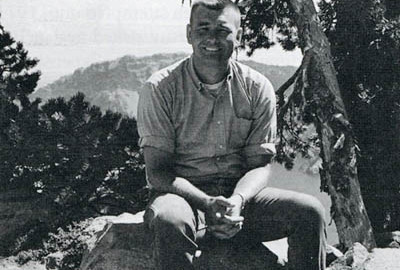Other than perhaps Dick [Brown] being a sort of cheerleader.
I know that Donaldson didn’t get any money from them. There was no equipment provided. We had to Jerry-rig a lot of stuff. I think he had some stuff from [the] Oceanography [department at OSU] that he borrowed. This consisted of deep sea devices to measure temperature. He had some money to buy some nets. We didn’t really have much of anything. I mean it was unbelievable. For example, I wanted to look at the mud/water interface and I tried to make a device that would allow me to take water samples near the bottom. I worked at Oak Creek lab for a month on this thing and it didn’t work. I asked for help and they said there’s some junk up in the attic, do what you can. It was a very primitive situation and I was very disappointed. The only money we had was to pay salaries. I don’t know where Donaldson got the money to buy what little equipment we had. He was able to buy a couple zooplankton nets and had some C-14 stuff. He also bought a camper and a little boat. The boat was so that we could go on the other lakes. We even rigged up a little crane.
Did you ever see the USGS folks who did their study at Crater Lake?
Phillips and Van Denburgh, no (12). I visited Phillips in his Portland office during the summer of ’67 in the process of gathering literature. I went to Portland, Salem, Bend, and visited various agencies to see what they had on lakes of Oregon. Phillips was an older guy and he had a lot of stuff.
As far as what the Park Service provided, it was not even logistical support. They provided the little trail packer that allowed us to haul our gear down the trail. I think we could refuel our boat at the concessionaire’s pump near the dock. We had to keep track of what the boat used and we had to pay for the fuel used. Through the efforts of Dick Brown we were able to stay in the park free, and the camper allowed us to cook our own meals there. We brought our food with us.


